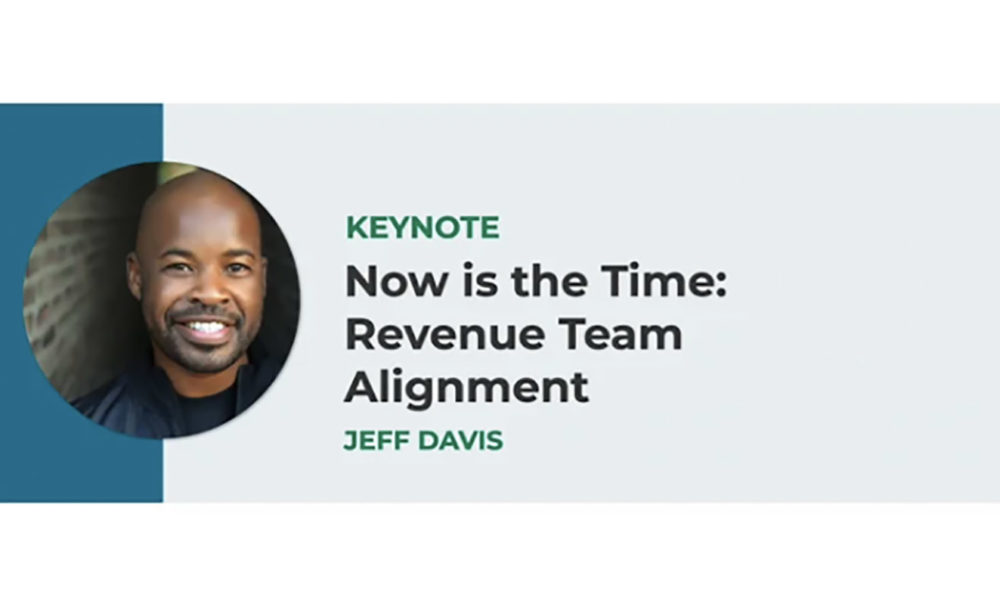Creating Alignment Across Revenue Teams
5.1K Views | 9 Min Read
In the rapidly changing business environment, it can be easy to feel like you are endlessly treading just to keep your head above water. When faced with uncertainty, the knee jerk reaction is often to just do more of everything: more meetings, more emails, more hours. But rather than changing the outcomes, this approach quickly leads to exhaustion.
No amount of hard work can make up for a misaligned or unclear strategy. The focus needs to shift away from just doing more things to doing the right things — and this mindset comes through alignment.
In order to adapt to change and come out winning, stakeholders across the business need to work together to unify the buyer experience. Particularly for revenue-facing teams, enablement can play a crucial role in bridging the gap between sales, marketing, and post-sales to help guide prospects and customers through a cohesive buyer’s journey.
Cost of Misalignment
While the relationship between go-to-market teams may seem smooth on the surface, that does not necessarily mean those teams are well-aligned. Consider some of these common symptoms of misalignment:
- Poor Quality Leads: Perhaps the organization sees a high volume of leads coming in with low conversion rates. This can lead to the stereotypical finger-pointing between sales and marketing, with marketing blaming sales for not putting enough effort into working the leads, and sales complaining that the leads are too low quality. In this scenario, there is clear misalignment in what leads should be pursued and prioritized.
- Different Goals: If go-to-market teams do not have shared goals and KPIs, it is a clear indicator of dysfunction. In such situations, departments are concerned with making their own numbers rather than collectively creating value for the business.
- Lack of Tribal Knowledge: Revenue teams may not do a good job of sharing business intelligence with each other. Marketing can benefit from the market insights that salespeople hear on the frontlines every day. When messaging and content reflect those insights, it is more likely to resonate with buyers and help salespeople move them forward in the sales process.
- Dysfunctional Relationships: This doesn’t necessarily mean that there is an obvious conflict between the teams. Often, the teams might not even openly disagree with or dislike one another. But while their personal relationships might be fine, their professional relationships might be suffering because they do not understand how to leverage it in a way that is mutually beneficial.
With any number of these symptoms present, productivity, efficiency, and effectiveness suffer across the revenue organization. When these teams are not working together in a synergistic way, then a lot of the efforts of the individual teams go to waste because they are not coordinated around collective goals, and therefore opportunities get missed.
The Modern Buyer
Digital transformations have significantly changed the modern buyer’s behavior over the past decade, and even more so in the past year as virtual business has become the norm for many companies. However, many revenue teams have struggled to keep up with the pace of change. This has led to a reliance on outdated tactics that no longer land with buyers. Consider a few of the ways that buyer preferences have changed:
- Information: In the past, the salespeople had the power of information on their side. With so much information now available online, that power has shifted and empowered the modern buyer with unlimited access to resources. This means they are less dependent on sales for information. In order to remain relevant, revenue teams need to become a strategic advisor to help guide buyers through the process.
- The Buyer’s Journey: The buyer’s journey of today is not a linear process. For example, a buyer could have read a piece of content and then want to speak directly to a salesperson, or perhaps they have gone through the entire process with a salesperson and then a new stakeholder enters the conversation. Revenue teams have to be much more agile and fluid, which means that there must be a coordinated effort across the revenue engine.
- Customer Experience: With companies delivering seamless B2C customer experiences in our personal lives, it is becoming increasingly expected that the customer experience at work delivers that same level of simplicity and personalization. For many buyers, the customer experience is more important than price and product.
This is why revenue alignment is so critical. With no shortage of content and resources for buyers to turn to, it is critical that revenue teams consider how they can break through the noise and actually make a difference for customers. Those that are able to deliver the right information at the right time, not just more information, are the teams that are winning.
The Modern Buying Cycle
In order to effectively meet the buyer where they are, sales enablement needs to have full visibility of the entire buying journey. Rather than thinking about buyer engagement in terms of marketing content or sales conversations, think of the buying cycle holistically in terms of every interaction a customer has with an organization and what the buyer needs in each particular moment. The modern buying cycle breaks these interactions down into five stages:
- Problem-naïve: In this phase, the buyer might not know that a problem exists yet. Thus, it’s important to not be focused on what the rep wants the buyer to do, but what the buyer needs to learn. What do they need to know in order to feel comfortable moving to the next space?
- Realization: Once the buyer realizes their business faces challenges, they research all issues to discover their specific business problems. Focus interactions on educating buyers on relevant variables to narrow down the causes. Buyers might not understand the gravity of their problems, and as the subject matter experts, reps can help quantify the impact of the problem as well as the sense of urgency around fixing it. In order to establish a relationship as a trusted advisor, take special care to approach this stage in a non-promotional manner.
- Exploration: With a clear understanding now of the business problems they face, buyers now look to explore all available solutions. In this phase, help buyers understand the different categories of solutions that exist to solve their business issues. In doing so, differentiate between the short and long-term impacts of the options available to them to encourage them to think more strategically.
- Confirmation: Once buyers understand what solutions are potential good fits, they then look to confirm what solution capabilities are required for their unique business challenge and organizational dynamics. Reps need to demonstrate that they understand what solution capabilities are important to the buyer, and further, show how other similar companies have successfully leveraged their solution to achieve success.
- Decision: When buyers are clear on what solutions can meet their needs, they are prepared to make a final decision on which company they think will be the best fit for them. This decision goes beyond just the product or solution; customer experience carries a lot of weight. Therefore, the interactions that will engage buyers in the stage should focus heavily on personalization based on everything the rep has learned about the buyer throughout their journey.
To effectively guide buyers through this modern buying cycle, revenue-facing teams need to come together to create a seamless process that is tailored to the buyer’s needs. Sales enablement can be the change agent to help break down organizational silos and bring key stakeholders across the revenue organization to the table.
Once the revenue teams can think beyond their silos, they are then equipped to think more holistically about creating a unified customer experience that helps the buyer navigate the process to making a decision, which hopefully at the end of the day, will be your organization.














